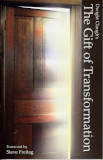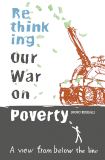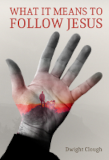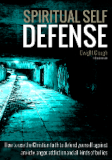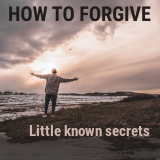Welcome to Lesson Twenty-One
Overcoming spiritual bullies with Spiritual Self Defense
In today’s lesson, we circle back to a list of spiritual bullies and discuss how Spiritual Self Defense can be used to defend yourself in the case of each spiritual bully.
Reading
Please take a few minutes and read through the list on pages 227–231:
After you finish the reading, I’d like to go back through the list with you, put these different spiritual bullies in categories and discuss them below:
Lie-based feelings like the ones in the list below are the most straightforward to deal with using the Spiritual Self Defense process. You can jump right in with decision map #2 on page 213 (see Lesson Nineteen).
- Abandonment (emotion)
- Anxiety
- Condemnation (feeling)
- Confusion
- Depression
- Fear
- Feeling defiled
- Feeling incapable
- Feeling ugly
- Hopeless
- Invalidation
- Loneliness
- Low self esteem
- Panic attacks—make sure that you’re working within your comfort and competence zone here.
- Powerless
- Shame—as opposed to true guilt.
- Stress—can be a lie-based emotion, it can be truth-based. We’re only designed to handle so much change so fast.
- Suicidal thoughts and impulses—if you or the person you are working with are actively suicidal, get help now. This process can wait. Otherwise, usually the pain connected with these thoughts is so close to the surface, that you can just process this with whatever emotions come up. If not, see the “solutions” category below. Suicide is “a way out.” It is a false solution to pain.
- Worry
False solutions, are behaviors or desires designed to medicate or “solve” the emotional pain that comes from pain lies. Consult decision map #3 on page 214 (see Lesson Nineteen).
- Addiction—many addictions are deeply mapped in the brain as a false solution to pain. While addictions sometimes vanish with one or two truth experiences from Jesus, more often it takes many truth experiences together with a supportive community to remove stubborn addictions. When Spiritual Self Defense is combined with a good 12-step or other recovery program, it becomes a powerful tool for removing addiction.
- Adultery, affair—remember, sin is a solution. This behavior wouldn’t be there if there wasn’t an underlying problem the person was trying to solve.
- Alcoholism—see the note on addictions above.
- Demonic oppression—while I am not a deliverance expert, I have noticed in the cases where I’ve encountered a demonic presence, the demon was always providing some type of “service” or “solution” for the person afflicted. I usually ask something like, “Take your time with this. If this demon were removed, what would you lose? Is there any part of you that would hesitate removing this demon?” Questions like this get at the reason the demon is there in the first place. Then you can lift those reasons up to Jesus, allow Him to bring a truth experience, and then once all the reasons are removed, it should be very easy to remove the demon.
- Drug abuse—see note on addictions above.
- Pornography—so many Christians struggle with porn and are trying to get free. (Some have given up trying.) When we understand that porn is a solution to emotional pain, and start addressing the emotional pain that porn is there to solve, it becomes much, much easier to walk away from this.
- Rape or sexual assault (perpetrator)—I’m NOT talking about the victim here; I’m talking about the perpetrator. Those who sexually abuse others are doing so as a way of coping with some inner pain. Can sex offenders change? Sure they can. But it does require a deep intervention ideally in the form of many truth experiences from Jesus.
- Sex addictions—see note on addictions above.
- Sexual dysfunction—this can of course mean many different things, some of which are solutions to emotional pain, some of which are caused by emotional pain, some of which are medical, or have other dynamics involved.
- Sin—once we understand that sin is a solution, we can get some real traction in removing it. If we remove the reason we sin, then getting rid of the sin is much, much easier.
- Suicidal thoughts and impulses—if you or the person you are working with are actively suicidal, get help now. This process can wait. As I mentioned above, suicide is sometimes seen as the ultimate solution to emotional pain. That pain usually comes from pain lies. So you want to uncover the pain the suicide is meant to resolve, and deal with it using the Spiritual Self Defense process.
- Temptation—see note on sin.
Painful past. Sometimes the memory of past hurts is painfully present. In some ways, that’s very helpful because you’re already partway there—close to where you need to be to receive a truth experience from Jesus. You should be able to pick up with either Step #2 or Step #4 on decision map #2 on page 213 (see Lesson Nineteen). If you’re having trouble processing the memory, see decision map #9 on pages 218–219. Childhood memories could contain many types of lie-producing events including:
- Abuse—sexual, physical, emotional (childhood)
- Betrayal
- Rape or sexual assault (victim)—these types of memories can be challenging to process, especially if they occurred in childhood. Don’t be afraid to reach out to a trained professional for help.
Triggering circumstances. A whole host of current day circumstances can trigger pain from the past in addition to any pain they bring in the present. When processing these circumstances, it’s important to acknowledge that they contain pain in their own right, but also can trigger pain from the past—from pain lies. If the past pain can be neutralized via a truth experience with Jesus, then you place yourself in a much stronger position to deal with the present circumstances. Use decision map #2 on page 213 (see Lesson Nineteen). Triggering circumstances can include:
- Betrayal—again, painful in the present—doubly painful if it pulls up hurt from the past.
- Financial challenges—how much better to deal with these from a position of peace and strength
- Homelessness
- Illness—sometimes the emotional healing that comes with truth experiences with Jesus can aid physical healing.
- Isolation (circumstance)
- Marriage issues—spouses tend to trigger each other; that’s just reality. But, with the right outlook, that triggering can be seen as an opportunity to meet with Jesus and experience transformation. In our marriage, Kim and I find that we are much less triggered by each other than we were years ago.
- Pain (physical)
- Persecution
- Poverty
- Rape or sexual assault (victim)—yes, there is considerable pain as a direct result of that overwhelming experience. Yet, we’ve seen people recover much faster if they process the present pain along with any triggered pain from the past with Jesus.
- Relationship issues
- Sexual dysfunction—see my earlier notes. Sexual dysfunction can be caused by many different dynamics, and, in turn, can trigger emotions caused by long-standing pain lies.
- Stress—as I mention in the book, truth experiences remove the pain lies triggered by “stressful” circumstances, making it much, much more difficult for you to get “stressed out”
- Suffering
Truth-based negative emotions may require a little different approach than lie-based emotional pain. After feeling the pain, we want to give the burden of the negative truth-based emotion to the Lord. Keep in mind that any of these may look truth-based on the surface, but actually end up containing a great deal of lie-based emotional pain as well. When in doubt, process for lies first (decision map #2 on page 213, see Lesson Nineteen).
- Anger—see decision map #7 on page 217 (Lesson Nineteen)
- Bitterness—see decision map #7 on page 217 (Lesson Nineteen)
- Guilt (true)—see decision map #8 on page 218 (Lesson Nineteen)
- Resentment—see decision map #7 on page 217 (Lesson Nineteen)
- Road rage—see decision map #7 on page 217 (Lesson Nineteen)
- Sadness, grief, loss—see decision map #6 on page 216 (Lesson Nineteen)
- Stress—I would start with decision map #2 on page 213 (Lesson Nineteen), but understand that some stress may be truth based. I think it would be fair to say that Jesus was stressed in the Garden of Gethsemane; He was sweating drops of blood—a sign of severe stress.
- Unforgiveness—see decision map #7 on page 217 (Lesson Nineteen)
Questions
Group discussion
I recommend you discuss the following question either with others who are studying with you and/or with our Facebook group.
Group discussion pp. 233–235 question 28. What jumped out at you in the list in Section 5.9? What was your takeaway from that list? (see page 227+)
Congratulations! Lesson Twenty-One complete!
In Lesson Twenty-Two, we begin looking at some supplemental tactics for Spiritual Self Defense.
Look forward to seeing you next time!
Dwight
Reading and other links
Chapter 5
Section 5.9
Reading: Pages 227-231
Questions: Pages 231-236 (selected questions)
Questions? Comments? Use our private Facebook group to connect…
Links to other pages in the Spiritual Self Defense textbook
Glossary & index (pages 285-289) | Answers to “Check your understanding” questions (pages 278-284) | Table of contents (pages 3-9) | About the author (page 290) | Cover page (page 1) | Copyright page (page 2) | How this book came to be (page 11) | How to get the most from this book (page 12) | Other books to explore (page 10)
![]()
Would your friends benefit from this course? Please send them here …
Next step after this course? Transformational prayer ministry training!.




